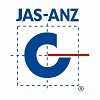RFD, with studios in Nashville, has a mostly rural audience that receives programming like “The Cattle Show,” “National Tractor Pulling” and the “Largent and Sons Hereford Cattle Auction.” “Don’s passion and understanding of rural America fits in so well with our ongoing effort to bridge city and country folks with this channel,” Gottsch said
The radio personality, who returns to the airwaves Dec. 3 on WABC-AM, will debut the same day on the seven-year-old cable and satellite television station that caters to viewers with homes on the range, the Rural Media Group, Inc., announced Wednesday.
 카지노 용어 services, Gottsch said.
카지노 용어 services, Gottsch said.
Two weeks ago, Citadel Broadcasting Corp. announced it was bringing Imus back to host a New York-based morning drive time show. The cranky Hall of Fame broadcaster was fired eight months earlier after his “nappy-headed hos” crack regarding the Rutgers University women’s basketball team.
RFD, with studios in Nashville, has a mostly rural audience that receives programming like “The Cattle Show,” “National Tractor Pulling” and the “Largent and Sons Hereford Cattle Auction.”
“Don’s passion and understanding of rural America fits in so well with our ongoing effort to bridge city and country folks with this channel,” Gottsch said. His station launched in December 2000, billed as the first 24/7 television network dedicated to rural America.
The previous incarnation of “Imus in the Morning” was simulcast on MSNBC, which dumped the show shortly after Imus’ ill-conceived comment.By Larry McShane



No comments